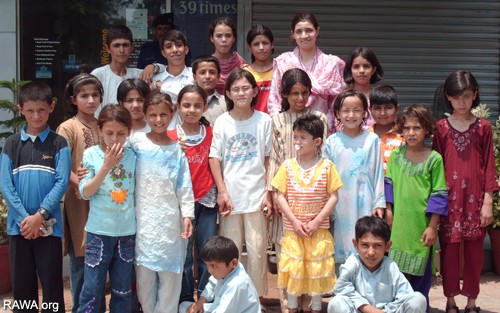
It may be a myth that most Afghans remember the harshness of Taliban rule
America’s war plan founded on a fading premise
Reading time: (Number of words: )
On December 5, 2009, Secretary of State Hillary Rodham Clinton told CBS News reporter Bob Schieffer:
“They (the Afghan people) don’t want to see the return of the Taliban. There is absolutely no evidence that the Afghans are in any way supportive of that.”
This has been the mantra of the American government and NATO for the past 10 years and it is a cornerstone of their war strategy. They are relying on the premise that the Afghan people remember the harshness of Taliban rule and will never permit the Taliban to return to power; therefore, the West will (by default) eventually prevail in Afghanistan.
This reporter investigated this premise and found that it is based on faulty information. It may be, at least in part, a myth.
According to the CIA’s Fact Book on Afghanistan, the median age for Afghan males is 17.9 years. That means that the average Afghan male was less than nine (9) years old when the Taliban ruled. In 2011, the average Afghan will have been less than eight (8) years old. Every year that goes by pushes the reality of Taliban rule further out of memory.
The average Afghan is more likely to remember the conditions under which they grew up. These include food scarcity; rampant crime; nighttime home invasions; relatives disappearing into the Bagram “pit;” the expansion of the infamous Pul-e-Charki prison; the return of the warlords; and the presence of corrupt courts, police and local officials. The current reality may be coloring their perceptions of the past.
Every year the BBC conducts polling throughout Afghanistan. The December 2009, polling revealed some disquieting data for the West. Only two-thirds of the population blamed the Taliban for the current level of violence. That means as many as ten million Afghans blamed NATO (assuming the data is accurate). The data may be even worse for NATO due to potential flaws in the BBC’s methodology. It appears that the BBC only polled adults. In the United Kingdom, the median male age is 39.4 years. In Canada, it is 39.6 years and in the United States it is 35.5 years (according to the CIA’s Fact Book). Polling adults makes sense in those countries. However, in order to obtain an accurate representation of public opinion in Afghanistan, one must also poll teenagers. This author speculates that a percentage of Afghan teenagers may have popular misconceptions of Taliban rule (i.e., that it was a time of peace, law and order, adequate food and adherence to true Islamic principles).
One of the facts driving this misconception is that the Taliban of 2010, is not the same as the Taliban of 2001. The Taliban of today is not a reclusive monolith of rural mullahs and students. It is a broad-based grouping of religious, tribal and nationalistic forces (provincial and cosmopolitan) that are loosely associated. Some are the intolerant, hard-corps Taliban of old; some are simply opposed to the foreign presence; some are seeking justice for perceived American and NATO abuses; some are fighting for religious purposes; some tribal groups fight because they have been marginalized by the current warlords; some fight because the Taliban pay well; and some fight to protect their criminal enterprises.
This new Taliban has been successful in pushing the war into far away Kunduz, Baghlan, Badakhshan, Nimruz and even Faryab provinces; far from the southern Pashtun heartland. It has created shadow governments in most provinces, filling a void left by the government in Kabul. Taliban officials believe they can return to power on national level, and there may be some basis for their optimism.
To defeat this new Taliban, Western strategy must become “youth-centric.” The reality is that this is, in significant part, a war for the hearts and minds of the children of Afghanistan, or at least its teenagers. This author fears that officials within the Defense Department, State Department and NATO fail to grasp the significance of this fact. Less Ph.D. economists are needed managing Afghan aid programs and more child psychologists and anthropologists. A review of NATO, USAID and other U.S. Embassy programs reveals no evidence that the West is currently targeting its resources, efforts and message at the majority of Afghans (i.e., the youth of Afghanistan). It is they who may ultimately choose the victor in this conflict.

Poems for the Hazara
The Anthology of 125 Internationally Recognized Poets From 68 Countries Dedicated to the Hazara
Order Now









